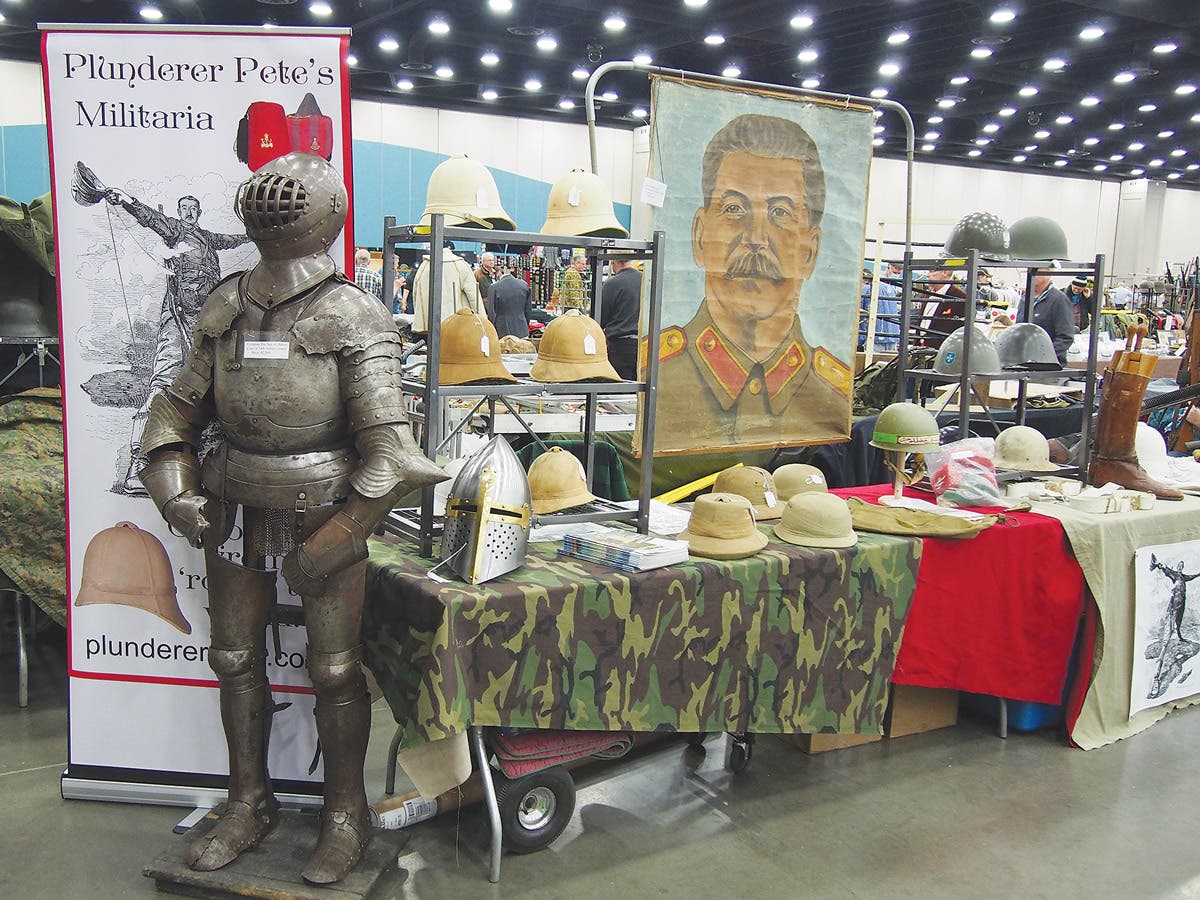The ‘Friendly Invasion’ set in stone
The seaside town of Lyme Regis in Dorset, on the south coast of England was the training grounds for American troops that assisted in the Allied’s resolute cause. It was fondly referred to as the “Friendly Invasion” during WWII.
The seaside town of Lyme Regis in Dorset, on the south coast of England, is a popular tourist destination these days. However, the story was much different during WWII when the county of Dorset was “home’ to some 80,000 service personnel that came to practice tactics and live firing exercises along the many beaches, such as West Bay and Swanage. All trace of that activity has long since disappeared, but dotted here and there are memorial plaques to commemorate the Allied forces.
At Lyme on the wall by the slipway leading down to the beach is one such commemorative plaque. Sadly, not many people look at it, despite it being in such a prominent location. As a historian I know of such things and the time when American troops arrived in Britain in a deployment sometimes referred to as “The Friendly Invasion”, because friendship was extended to Britain’s Allies and they were welcomed as such.
The first contingents arrived in early 1942 and it must have been as great a culture shock for them as it was for the British civilians. When William Ong of the 8th USAAF, later to be based in Suffolk, arrived in April 1942 he expressed his shock at seeing all the bomb damage from the German “Blitz”. Throughout 1943 more troops arrived in the build-up for the “Second Front”and these all had to be put somewhere. By early 1944, there were more than 1.5 million service personnel in the country with 71,000 in Suffolk alone.
This county in the area called East Anglia had a concentration of USAAF bases of one every eight miles from where missions were flown. At the time, the county had a population of around 400,000 civilians, meaning that one person in six was American and in the military. The young, single girls loved it for the dances. The children too, for all the candy they were given. The area today has many memorials to the men and women who served there, including the 95th and 390th Bomb Groups in Suffolk and the 100th and 448th Bomb Groups in Norfolk.
Sadly, outside the area of East Anglia the memorials become fewer, but they pick up again in the West Country of England which includes Devon, Dorset, Cornwall and Somerset, where I live. The town of Yeovil had 12,000 service personnel in and around the area during WWII, including 1171st Engineer Group ‘C’, 966th Engineer Medium Company and a number of Replacement Companies that would be used during the Normandy Campaign. To commemorate the men and women a plaque was unveiled outside Lloyds Bank in the town on June 6, 2004. It was fitting that it was placed there because the bank building served as the payrole department for the troops.
Mostly, memorials are an expression of gratitude, but a short drive away from Yeovil there is to be found a sad memorial to American troops in the Dorset town of Sherbourne. On March 30, 1944, as a mine-laying exercise was concluding in the grounds of the US Army Hospital 228th Camp Unit outside the town, a truck rolled over a live mine and detonated it killing 29 men of the 204th Combat Engineer Battalion and wounding many others. Forty-five years later memorial plaques bearing the names of those killed in the accident were placed outside Sherbourne Abbey by the town’s war memorial.
As sad as this incident is, it does not come anywhere near the losses suffered during “Exercise Tiger”, sometimes called “Operation Tiger”. But it was a training exercise as opposed to an operational deployment. On the evening of April 27, 1944, a convoy carrying thousands of troops set to take part in a large-scale training exercise was launched to practice amphibious landings in readiness for assaulting the Utah Beach on D-Day. During the early hours of April 28, the convoy was attacked by nine German torpedo boats and two ships were sunk.
At least 749 men were killed and 200 wounded with two other vessels badly damaged. Being so close to the real landings, it was decided to keep the incident secret to avoid upsetting moral. Today at Slapton Sands in Devon, there is a memorial that bears the names of all those killed in the attack which includes army and US Navy personnel. A Sherman tank lost in the attack was recovered from the seabed in 1984 and the complete memorial was unveiled in 1987.
Sometimes evidence can be found at historical sites that have a personal touch, such as Old Wardour Castle, which dates back to the 14th century, about 15 miles west of the city of Salisbury in Wiltshire. The surrounding area, which includes Salisbury Plain, was one vast training area for troops, including American infantry and armoured units. They had time off and some visited the castle, because there, engraved in the stone are the initials of Pvt. A.E.Y. Who he was or any other details are unknown, but he left his mark. It would be nice to think that he did return to Old Wardour Castle after the war.
There are hundreds more memorials scattered across the towns and villages of Britain and pop up in the most unexpected places. On a closing note for this month there is a memorial on a former wartime training area in Devon, which today is a favourite place where military vehicle owners go to test their cross-country handling skills driving wartime Jeeps and Weapon Carriers. That is one I am saving for a later date.
For anyone who would like to know more about the USAAF Bomb Groups mentioned they may find the following Websites helpful:
*As an Amazon Associate, Military Trader / Military Vehicles earns from qualifying purchases.







